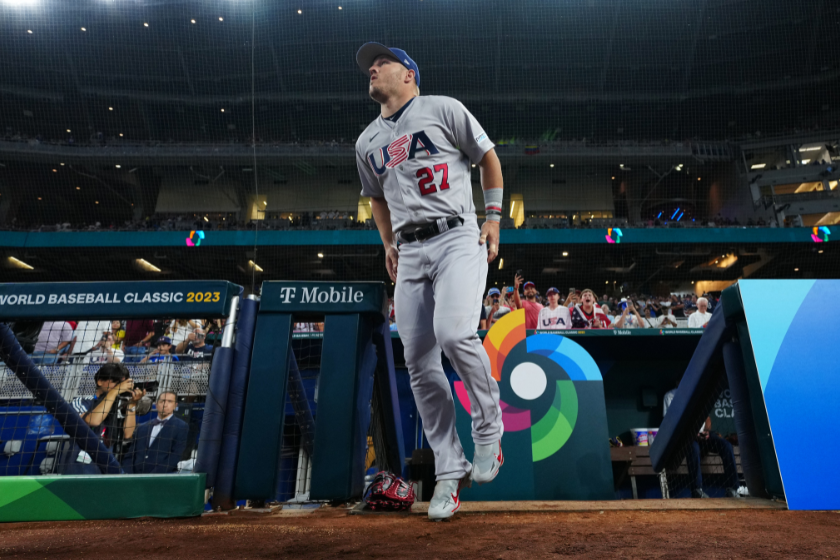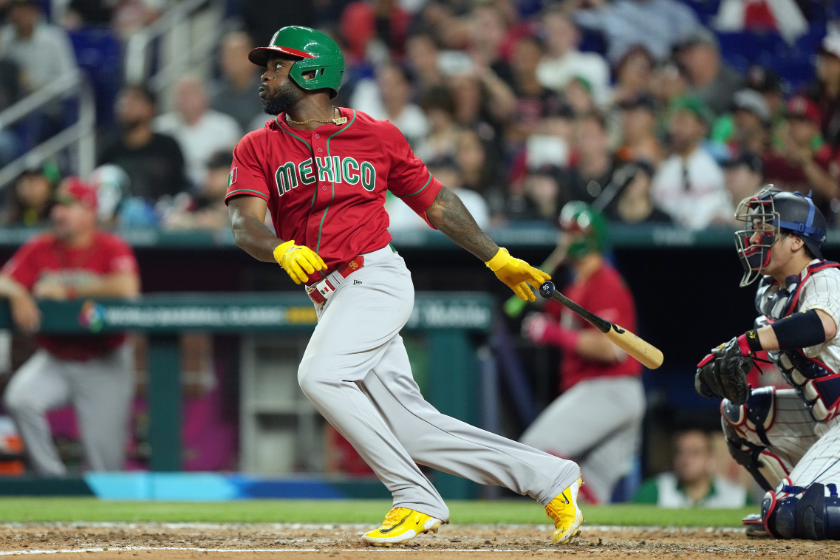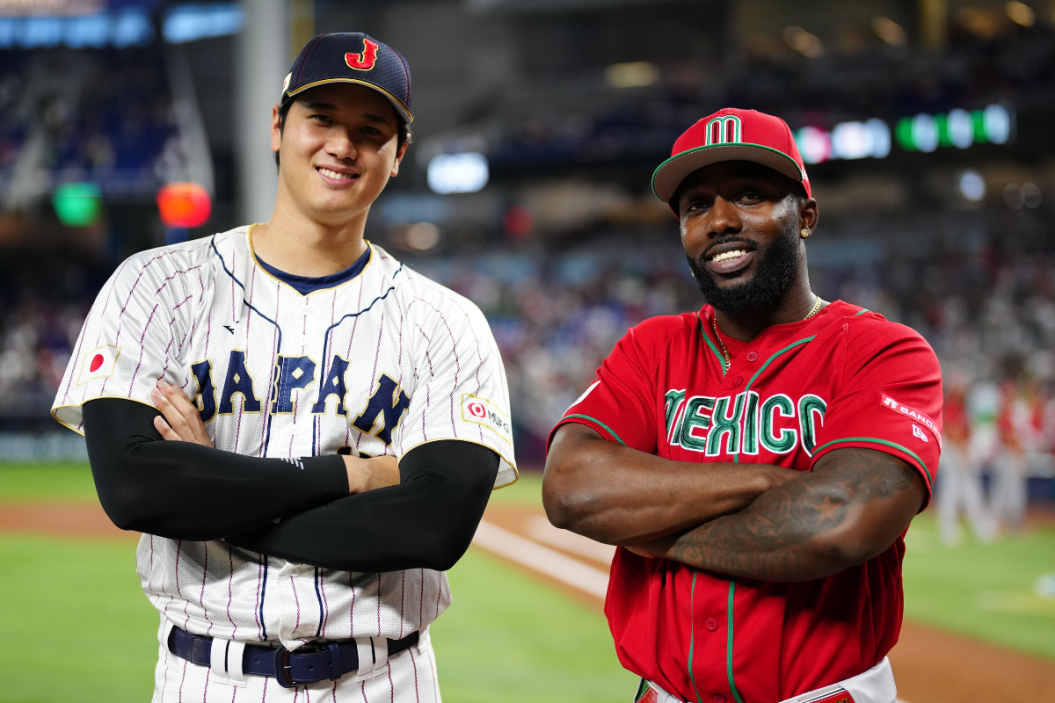The World Baseball Classic was much more than many fans thought it would be before the tournament began. The ending, a strikeout by pitcher Shohei Ohtani over Los Angeles Angels teammate Mike Trout, was the exact matchup that everyone wanted to see. Two likely Hall of Famers went up against each other with a chance at capturing a championship for their country on the line.
Videos by FanBuzz
Baseball purists would argue that the World Series means much more to the game of baseball. Perhaps it should, too — but it didn't feel that way to any of the almost 5 million WBC viewers watching on Fox Sports in America, a rating that killed the former record of just over 3 million total viewers for the 2017 WBC final between the U.S. and Puerto Rico.
The World Baseball Classic Electrified the Baseball World

Photo by Daniel Shirey/WBCI/MLB Photos via Getty Images
Setting aside the fact that the viewership was supposedly even higher in Japan, the world of baseball has shown that the best way to proceed is through passion, excitement and competition, factors that Major League Baseball should do its best to incorporate.
The most basic but rewarding thing that the WBC did for the game was put the star players in the big moments. As soon as the tournament started, each game had a high amount of attention. Of course, this isn't going to be the case for the over 2,400 MLB games in total over the course of the season.
Still, MLB fans dread the fact that players such as Trout and Ohtani are always stuck at home in October. Ohtani has yet to participate in the MLB postseason, while Trout has only been able to do so one time as he starts his 13th season with the Angels in 2023. Leaving these players on their couches while the biggest playoff series in baseball are taking place is no formula to have the best product on the biggest stage.
This is not to say that baseball doesn't have good players in these series, but Trout and Ohtani are easily among the absolute best in the game. Both can and will be considered for the MVP award and are almost unanimously rated as top five players in the game. It would only be fitting to have these players in the championship mix deep into the season during most years but certainly now more than never.
The big issue for MLB is that it isn't entirely obvious how exactly the league should go about getting these players to these stages consistently. Nonetheless, MLB would be best served to set the game up to have its absolute best players playing late in the season.
Playing for the Name on the Front of Your Jersey

Photo by Eric Espada/Getty Images
Though the WBC took place before a long MLB season began, nothing meant more to the WBC players than being able to represent their country in the tournament, even if they weren't originally from the country they played for.
"To me, Mexico is special," Tampa Bay Rays outfielder Randy Arozarena said. "Since when I left Cuba, Mexico is a country that received me with arms open."
Arozarena was born not in Mexico but Cuba. Other players followed in his footsteps with their freedom of participation and elected to represent countries they had ties to by means other than birth. This condition seemed to allow players to have a stronger bond with the game and whom they were playing for. Begging to play for Team Mexico, Arozarena made his way onto the team and created memories for his country.
Another name involved in the tournament that epitomized this sensation more than the rest was Lars Nootbaar of the St. Louis Cardinals. The outfielder had never even participated in the WBC before. The California native entered the tournament with Japan, as much of his lineage came from his mother's Japanese roots. A regular player in the big leagues but new face to the country of Japan, Nootbaar impressed the world enough to grow his Instagram account from thousands of followers to over 1 million over the course of the tournament.
"To be in the Tokyo Dome for the first time every representing Japan, pretty surreal experience," Nootbaar said during the tournament. "To be able to connect me and my family together from opposite sides of the world. It's a pretty special moment for me."
Aided by his pepper grinder celebration, Nootbaar instantly became a favorite to the people of Japan. Chants of "Noot!" would rock the stands at the Tokyo Dome, and the infectious celebration has even spread its way to St. Louis.
Nootbaar provides only a small example of how baseball players can generate fun in a game that is over a century old. His style and enjoyment only helped fuel the insanely involved crowds across the stadiums where the WBC games were played. The passionate fans made the environments vibrant and colorful, and they didn't shy away from flying the flags of their home countries.
Yet, MLB has had a serious, longtime battle with having fun, and it is hard to imagine this kind of behavior would fly at a regular MLB game. The league's "unwritten rules" have consistently killed enjoyment of the game, and MLB is only just now — kind of — trying to push back against these rules.
In an ideal world, the joy that WBC players had while playing in the tournament will be commonplace on MLB diamonds. Fans love the fun, players love the fun, and it grows the game.
At the end of the day, the best part about the WBC is that it worked heavily with MLB. Now, professional baseball has a blueprint to follow. If MLB wants to chase any chance of again becoming America's favorite sport and enjoying the success of the multi-country tournament, it must follow the formula that the WBC has laid out for the league.
